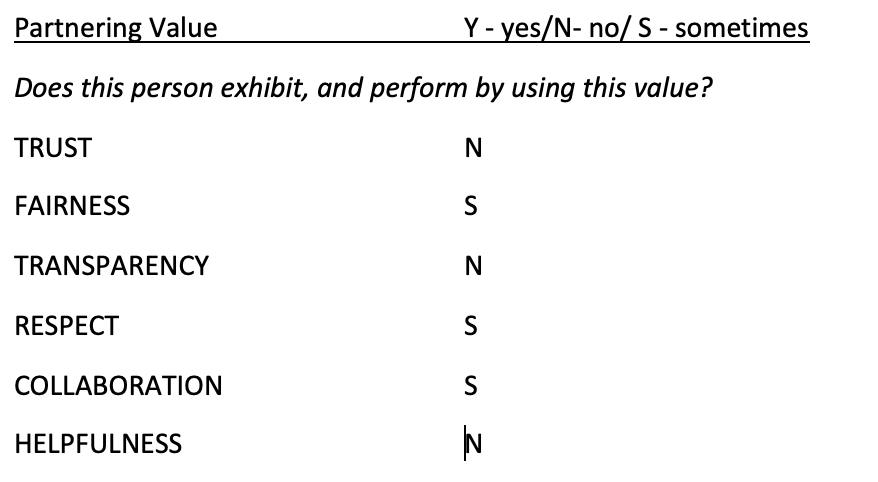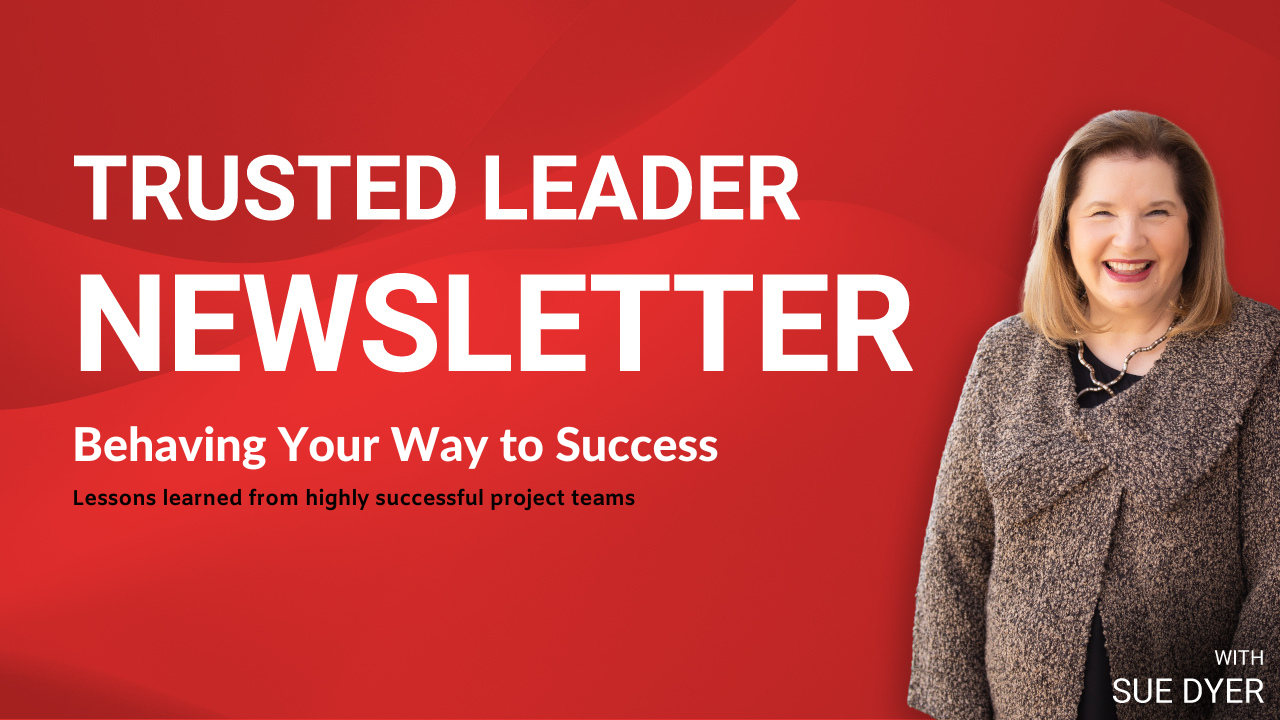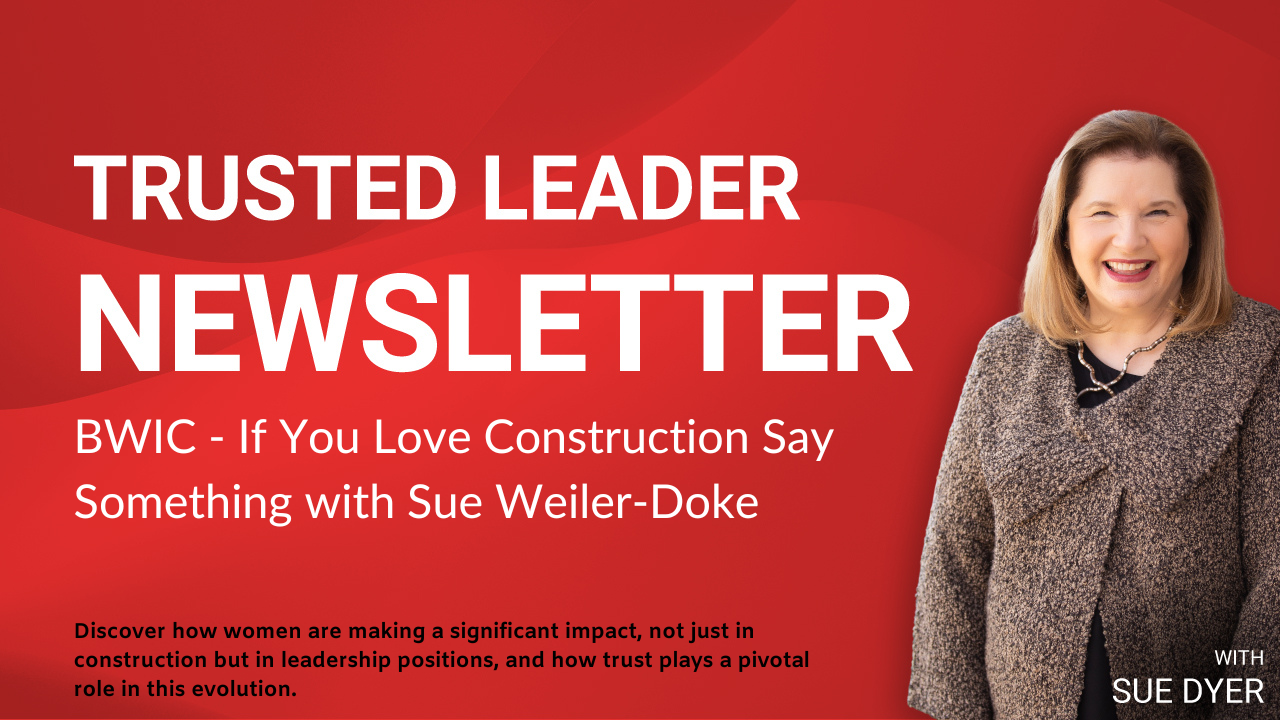Dear Construction Nation,
Over the years, I’ve encountered dozens of leaders who were perplexed by the poor performance of an employee, and/or their impact on the team. I recall one such person who was the project leader on a $70M roadway project. She kept citing the provisions of the specifications in every conversation. She kept “score” on how many “infractions” had been made. Everyone was getting frustrated. Over time she began to write ten-page letters citing all the various specs that were not being followed correctly. It seemed very difficult to try and get answers and to move forward. Problems just never seemed to get addressed. The project stalled, and the letters grew.
This kind of dynamic happens all the time on our projects, and in our businesses. It can be very difficult to know what to do. Is the contractor really messing up so much? Or, is the project manager the issue? This can be mind boggling to try and figure out!!
So, I offer you four steps that I often use when trying to understand performance problems. I hope you can use these to help you evaluate such problems with your people and teammates, so you can decide a course of action for your circumstances
Step 1: System/Process
The first place I start is by assuming that it is NOT the people involved, but that there is something in the system or process that is creating the undesired result. You can know this if you put another person in the role and then find that you are still getting the same poor result. If you put great people into a poor process or system, you will likely get poor results, and the people will be frustrated!
Here are a few examples of what this can look like:
- The spec allows for a 20-day review period and if each review took the full 20 days, the project would be over schedule by a year! But no one tells the reviewers.
- There is a policy that you must “notify” of any change within a set number of days, but what if you don’t know if it is a change for more days than is allowed?
- The project needs a design update, but the designer is not allowed to help the team because they have other priorities.
You get the gist – the process or system is in the way.

Step 2: Unwilling or Unable
The next step it to look at the people involved, particularly the person/people with a “resistive” attitude or where a bottleneck has developed. Ask yourself, are they unwilling to do what is needed – or are they unable to do it?
Whenever you hit resistance, it is always one of these two things. They don’t know what/how to do what is needed or being asked to do; or they are unwilling to do it for some reason(s). Yes, sometimes it can be both, but one outweighs, the other. For example if a person doesn’t know how to do something successfully, they may become unwilling to try.
This can be a challenge to figure out. People who don’t know what to do can be very good at “fogging” their challenge so everyone ends up confused. But the best way to determine if they are able is by their actions. Are they doing what is needed and getting resistance from other team members?
One pattern I see regularly is when someone is in a new role, and they take a hard-handed approach. This is typically a way to overcompensate when you don’t really know or understand the role yet. With some mentoring and coaching this person can learn the role so they succeed and not make chaos and enemies while undermining the project or business.
If someone understands the role and has the skills to perform, then they are resisting for some reason. Resistance, typically has FEAR behind it. You may see it escalate over time. First, they half-heartedly follow through. Second, they stop trying, Third, they actively refuse. Fourth, they leave.
People resist when they feel they are not valued, being treated fairly, or cared about (all Partnering Values). Of course, you can have drug and alcohol issues show up as unwilling when it may be that they are unable. But it doesn’t take too long to figure out that something is not right with a person and lead them to help.
Determining whether you have a person who is unable or unwilling is so important because the remedy is very different. Do you need to train and mentor the unable? Do you need to break through the resistance of the unwilling?

Step 3: Values Fit
Values are beliefs that create your cultural norms – in other words, they determine how people behave. Think about how powerful norms are. If I invite you to dinner at my home and we have a “norm” of saying a prayer before we eat, how likely are you to behave as if you are praying when my family does? Very high! Yes, people normalize to the norms of behavior. In fact, norms tell us what “normal behavior” is! So, for your business and projects you have created cultural norms, and these define your business culture. They are always based on what is valued most. (Often unknowingly and not on purpose).

I’ve identified 6 partnering values that set the stage for high trust norms. Partnering Values include Trust, Fairness, Transparency, Respect, Collaboration, and Helpfulness.
You can evaluate your team member on how much they embrace these values and use them on your project or within your business. If you have your own set of values, then add those. But here is how an evaluation can easily be done.

From the example above, you can see that this person, with two no’s and two sometimes, is NOT performing by using the partnering values and therefore would not be a fit to create a high trust culture. Many teams don’t allow any “no’s” to be on the team. If you have three No’s plus Sometimes, then that would be when you might want to consider if this person is a “fit.”
You aren’t going to be able to create a high performing team with people who don’t embrace the values that create high performance.
You could have your entire team do this evaluation of each other. If there are negatives, then seriously consider if this person is a fit, or if they can turn it around, with sincere desire, and the team’s help!

Step 4: Right Person – Right Seat
I walk into so many projects and businesses that are just not structured to succeed. They do not have the right people in the right seats to make things work.
I learned from the Entrepreneur’s Operating System (EOS) a simple way to evaluate your structure to see if you have who you need to succeed, where you need them.
In his book, Good to Great, Jim Collins describes the “right person” as someone who shares the company’s values and helps support a culture based on those values. The right seat means that this person has very good skills for the work they are required to perform.
First, you need to define the seats you need and what each person needs to be able to do. Not based on the people that you have, or the traditions that you’ve used, but based on what is needed to achieve the vision and goals the business/team has. Write out a description for each “seat.” It is best if you can identify ~ 5 major responsibilities for each role.
Once you have your “seats” defined and how it all works together, it is time to define the right person for each seat. Identify who in the company will be responsible and accountable for each seat.
In EOS they evaluate by “GWC.” Does the person get it (understand what the position entails)? Do they want it? Do they have capacity?
By filling your “seats” with the “right person” you will know that you are structured to succeed.
Often, when doing this exercise, you will discover people who are not the right person for a seat, or for the business. Then you can help them find the way out of the team or business, to a place where they are a “fit.”
You may also find people who are the “right person” (they believe wholeheartedly in the values and vision), but in the wrong seat. They would be able to do better for themselves and the business in a different seat. So, you can move them where they can be successful and where they can really help the team/business.
The concept of designing all the seats you need for what you need to do, and filling them with the right person for that seat, is very powerful. As well as removing people who are the wrong person in a right seat (this is the wrong person for the company, but the seat is the right role needed for the business). Of course, if you find a person who is the wrong person in the wrong seat, this person is not a “fit” either.
Continuing with the story I started with. This project leader was identified as someone who was a right person, but in the wrong seat. Once she was moved into a more analytical department where she did well the project got back on track.
These four performance evaluations allow me to understand what is needed when leaders hit barriers in their business and teams. I hope you will find these as useful as I have and take them with you as tools on your trusted leader journey!
In Trust,

If you liked this topic today and would like more information, listen to Episode 42 of the Lead with Trust Podcast.
Learn more about the Entrepreneurs Operating System (EOS) here.
And you can find Jim Collins’ book, Good to Great, here.
Want to know what projects different owners have coming out? Sign up for the International Partnering Institute’s “Owner’s Lunch & Learn.” On August 22nd, IPI is highlighting Judy Ross, San Jose International Airport’s Assistant Director of Aviation, who will highlight the Airport Master Plan Program and other projects happening at SJC. Register here,
Trust is the new Currency for construction, as we move toward collaborative delivery. ARE YOU READY? Click here to take the Trusted Leader Assessment and find out your personal results.






